Alfalfa and Hungry Hawks
Arizona's Alfalfa fields provide habitat for insects, birds and mammals
Arizona's Alfalfa fields provide habitat for insects, birds and mammals
Alfalfa is grown on farms throughout southern Arizona and in half of Arizona's counties. With our climate, Arizona's alfalfa yields (tons per acre) are the highest in the US and among the highest in the world. Alfalfa's extensive root structure improves the soil's ability to retain moisture, and alfalfa fields provide a rich habitat for birds, insects (especially pollinators) and small mammals. Alfalfa is harvested regularly throughout the winter growing season. First it is mowed, then , as the photo below shows, the baler goes through the field compressing the hay into familiar rectangular bales. In the distance, you can see the yellow bale wagon which picks up many bales at a time and delivers them to an open collecting point just off the fields..
The bale wagon moves very quickly to keep up with the baler. You can see that it has a full load and will take off down the farm roads to drop off its load and return to pick up many more bales.
While the alfalfa is growing and after the fields are cut, many birds arrive for the easy eating and exposed prey that have been revealed. Migrating Swainson's Hawks will drop into farms on their spring migration north, to load up on the rich buffet that is provided.
This same Swainson's has used its "nictitating membrane" to cover its eye. That translucent third eyelid is used to protect and moisten the eye of raptors.
Another Swainson's was sitting in the next field. These birds likely finished a very long flight the day prior, and were now fattening themselves on the many insects and field mice in the field. With an alfalfa harvest, the birds do not have to spend much energy hunting as the food is plentiful and within an easy reach.
A few hours later and a few Swainson's Hawks were seen soaring over the fields. I didn't know whether these were the same birds I had seen sitting in the alfalfa, or were other birds that had just arrived.
Swainson's Hawks are known for the high variability of their plumage. They have broad and long wings and the flight (trailing) feathers under the wings are dark which contrast strongly with the white wing linings. Generally Swainson's Hawks have white bellies, dark chests and a dark head.
Typically the dorsal side (upper wings) of a Swainson's Hawk is dark.
Swainson's Hawks will breed in the wide open country of the Great Plains and the West. In southern Arizona, we get the chance to see them as they migrate north in the spring, and when they migrate south in the fall as they head back to their wintering grounds in Argentina!



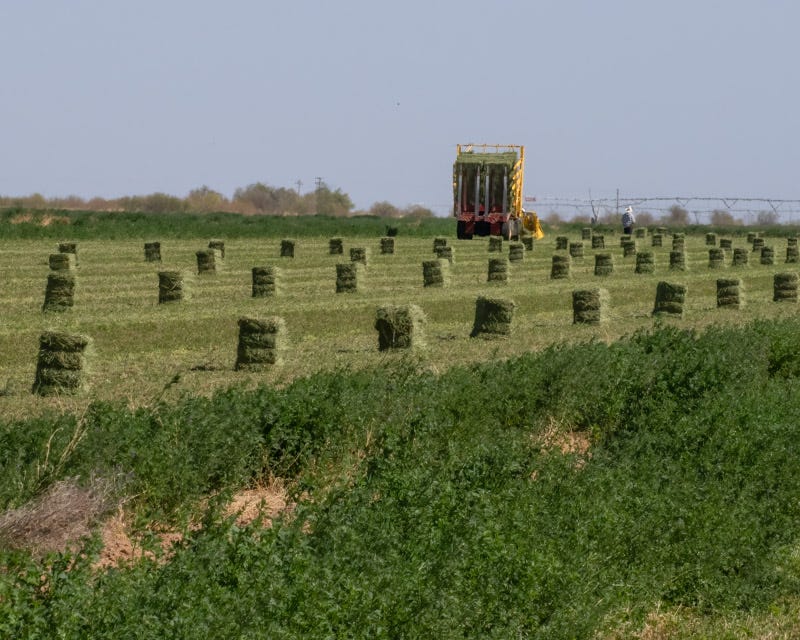
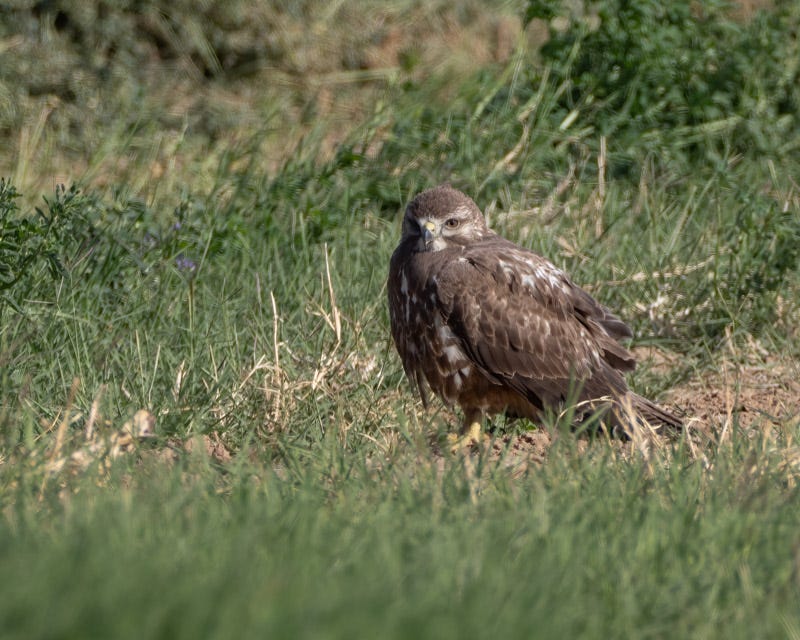
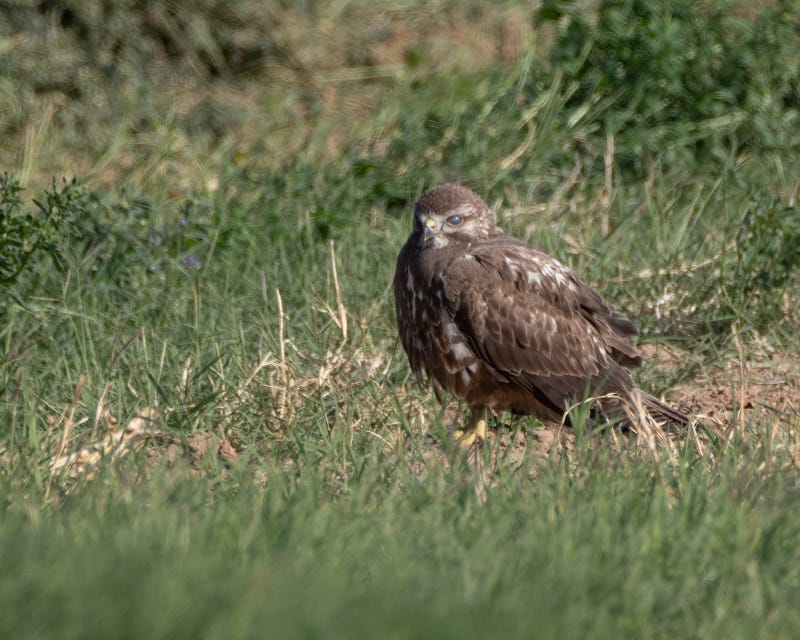
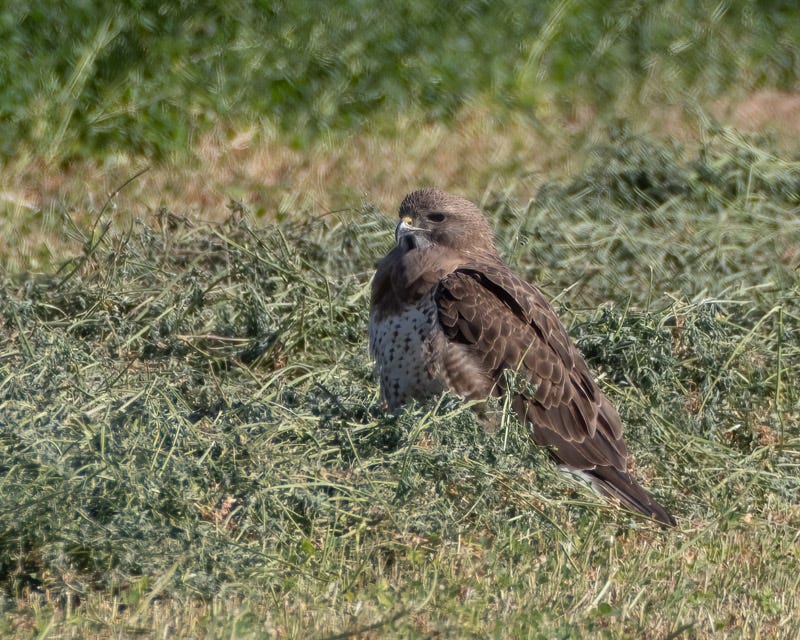
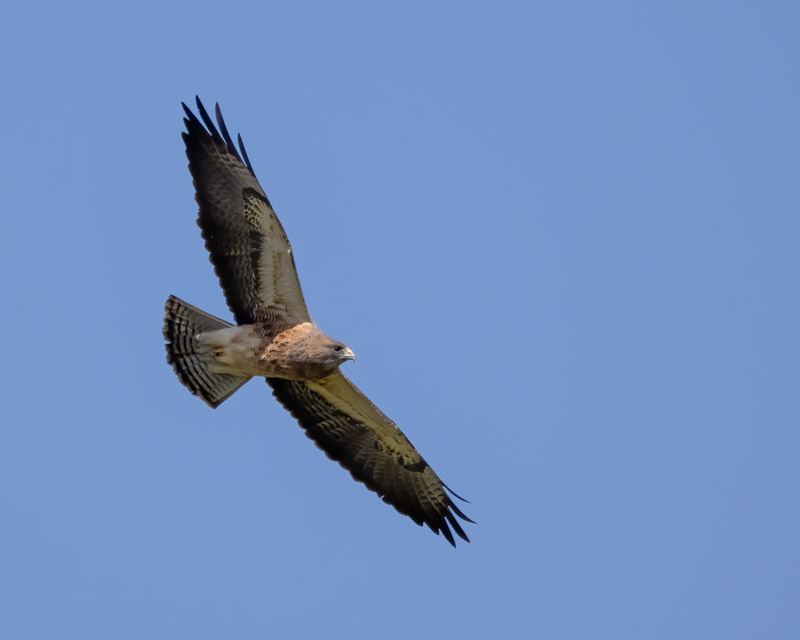
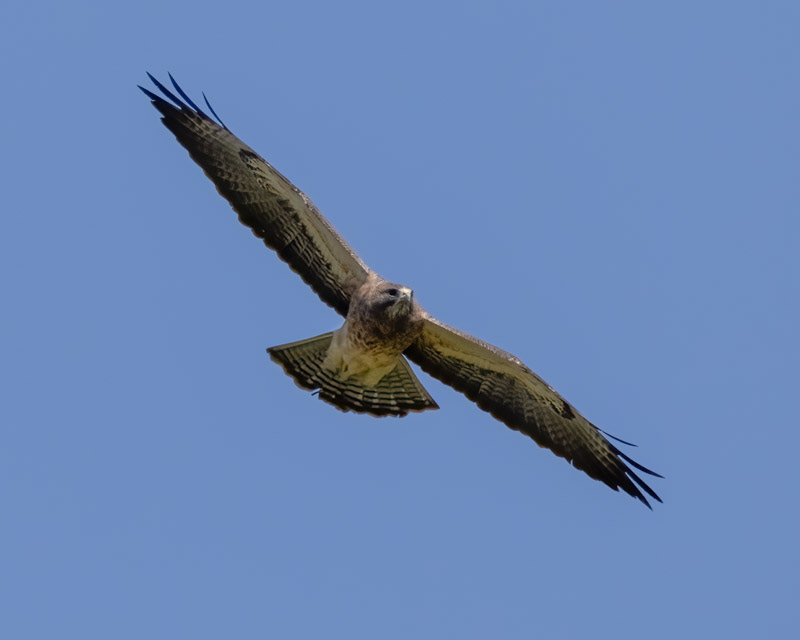
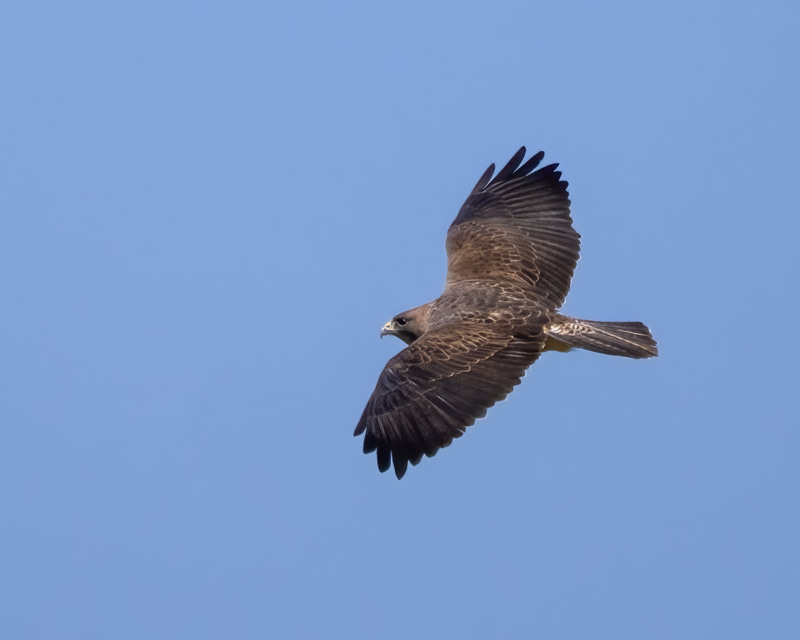
As always, I learned something from your post- I didn’t know about the alfalfa fields in Tucson!
Thanks for this informative post!